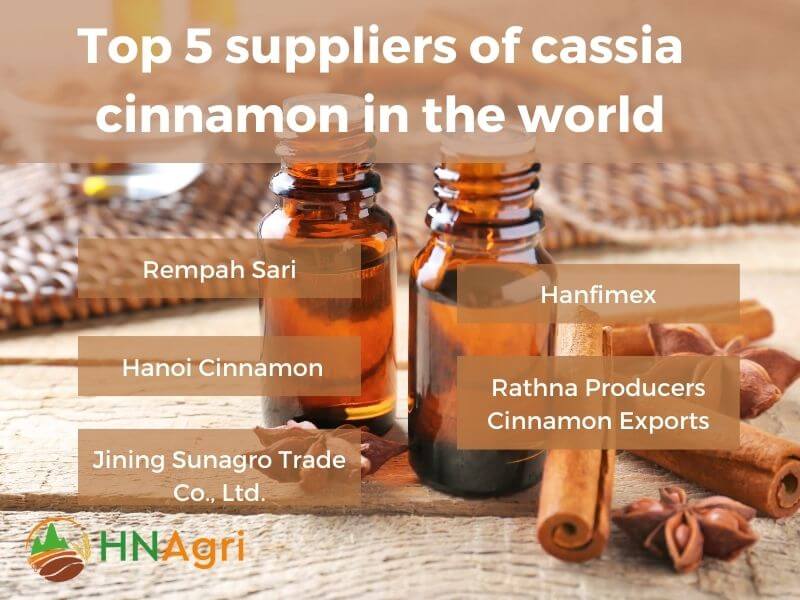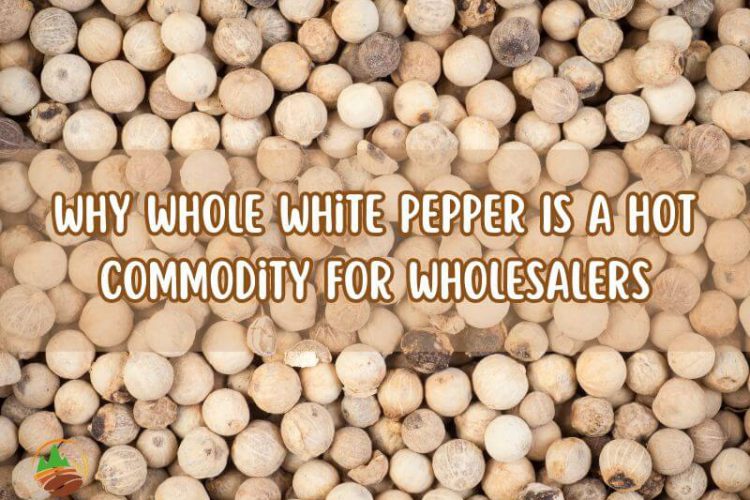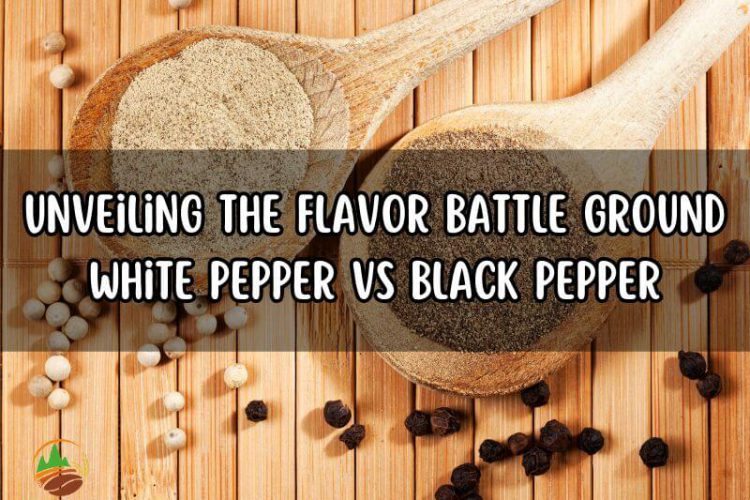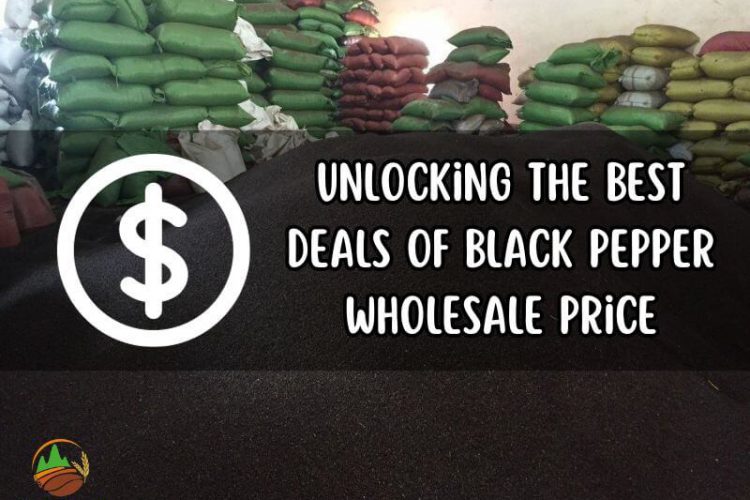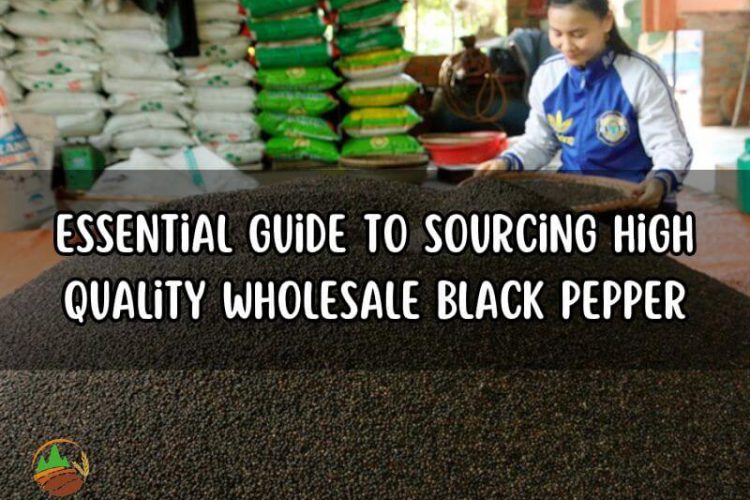Are you looking to maximize your profit margins? Look no further than our wholesale guide to cassia cinnamon. This article delves into the benefits of using cinnamon cassia in your products, as well as tips for purchasing high-quality cinnamon in bulk quantities. Learn how to stand out in a competitive market and satisfy your customers’ needs by adding cassia cinnamon to your inventory. Don’t miss out on the opportunity to boost your revenue with this popular and versatile spice.
Table of contents
- 1. 1. Overview of cassia cinnamon
- 2. 2. Cassia cinnamon growing areas
- 3. 3. Prices of cassia cinnamon products today
- 4. 4. Kinds of cassia cinnamon products wholesale in the world
- 5. 5. Cassia cinnamon production process and output
- 6. 6. Top 5 suppliers of cassia cinnamon in the world
- 6.1. 6.1. Rempah Sari is Indonesia’s one of the largest important cassia cinnamon exporters
- 6.2. 6.2. Hanoi Cinnamon leading supplier of cassia in Vietnam
- 6.3. 6.3. Jining Sunagro Trade Co., Ltd. a top provider cinnamon cassia come from China
- 6.4. 6.4. Rathna Producers Cinnamon Exports (Pvt) Ltd the largest cassia cinnamon in Sri Lanka
- 6.5. 6.5. Hanfimex (or Hay Hanfimex Group) is one of the leading cassia export corporations in Vietnam
1. Overview of cassia cinnamon
Cassia cinnamon is one of the two most common types of cinnamon, the other being Ceylon cinnamon. Cinnamon cassia originated from Southern China and countries in South Asia such as Vietnam and Indonesia. It has unique characteristics compared to Ceylon cinnamon, which are presented below.
1.1. Types of cassia cinnamon
There are several types of cassia cinnamon, including:
- Chinese cassia cinnamon: Also known as Cinnamomum aromaticum or Cinnamomum cassia, this is the most common type of cinnamon cassia and is widely used in Chinese cuisine.
- Indonesian cinnamon cassia: Also known as Padang cassia or Korintje cinnamon, this type of cassia is grown primarily in Indonesia and is known for its sweet, spicy flavor.
- Saigon cinnamon: Also known as Vietnamese cassia or Cinnamomum loureiroi, this type of cassia is native to Southeast Asia and has a more intense and spicy flavor than other types of cassia.
- Indian cassia cinnamon: Also known as Cinnamomum tamala or Malabar cinnamon, this type of cassia is grown in India and has a milder, more delicate flavor than other types of cassia.
- Burmese cinnamon cassia: Also known as Cinnamomum burmannii, this type of cassia is grown in Myanmar and has a slightly sweet and spicy flavor.
Above are the types of cassiacurrently available on the market, each type will have different prices, as well as different uses and quality depending on your needs.
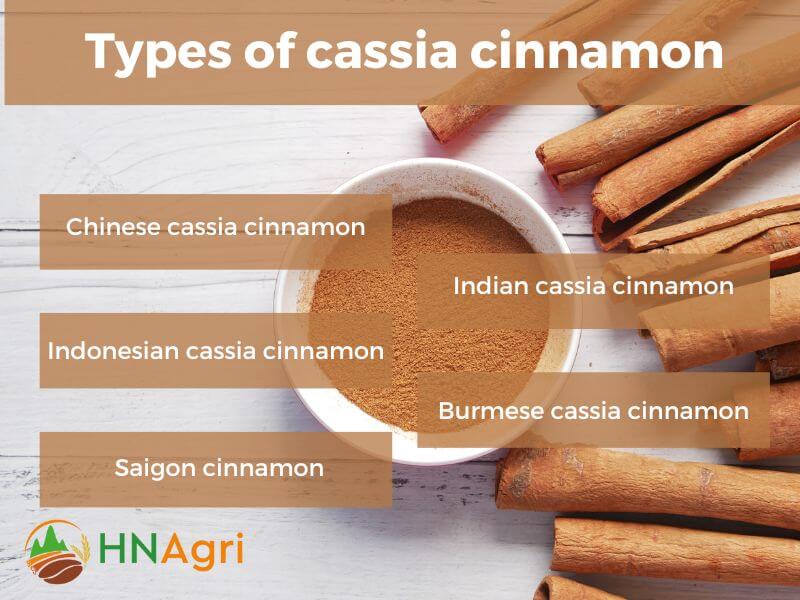
1.2. Outstanding features of cassia cinnamon
Here are the outstanding characteristics of cassia cinnamon on the current market based on criteria such as composition, aroma, taste, color, and usage:
- Composition: Cassia cinnamon contains compounds that have anti-inflammatory, antibacterial, blood sugar-lowering, and digestive support effects, including Cinnamaldehyde, Eugenol, Tannin, Catechin, and procyanidin, Coumarin, as well as vitamins and minerals such as manganese, iron, and calcium.
- Aroma: The aroma of cassia has a warm, full, and sweeter taste than Ceylon cinnamon and tends to be spicier. Cassia cinnamon also has a stronger and more distinct aroma than other types of cinnamon. The aroma of cassia is very distinctive; it has a warm, sweet, spicy, and slightly bitter taste.
- Taste: The taste of cinnamon cassia has some distinct differences from other types of cinnamon. It has a sweeter, spicier, and warmer taste than Ceylon cinnamon, with a characteristic taste of cinnamaldehyde, the compound that causes the distinctive aroma and taste of cinnamon cassia. Additionally, cassia has a slight bitterness and acidity, especially when used excessively or when using low-quality cinnamon cassia.
- Color: The predominant color is light to dark reddish-brown. In contrast, Ceylon cinnamon usually has a lighter color, often a light brown to yellowish-brown.
- Yield: Cassia cinnamon has a higher yield than Ceylon cinnamon. Indonesia ranks first in cinnamon production, followed by China and Vietnam as the third-largest producer of cassia.
1.3. The potential of cassia cinnamon in the world market
Cassia cinnamon has a strong potential in the world market for wholesalers. It is widely used in various industries such as food and beverages, cosmetics, and pharmaceuticals due to its health benefits and unique flavour and aroma. The demand for cinnamon cassia is increasing globally, especially in countries such as the United States, Germany, and Japan.
As a wholesaler, one can tap into this potential market by sourcing high-quality cinnamon cassia from reliable suppliers and offering competitive prices. Additionally, offering various grades and forms of cassia, such as whole sticks, powder, or oil, can attract a diverse range of customers with different needs. It is also essential to ensure compliance with international standards and regulations for the export of cassia cinnamon.
2. Cassia cinnamon growing areas
Cassia cinnamon is grown in several countries around the world, primarily in regions with tropical climates. The top cassia-producing countries are:
- Indonesia: Indonesia is the world’s largest producer of cassia cinnamon, with the majority of its production coming from the island of Sumatra.
China: China is another major producer, with the majority of its production coming from the provinces of Guangxi, Guangdong, and Yunnan. - Vietnam: Vietnam is also a significant producer of cassia, with most of its production coming from the central highlands and the southern regions of the country. Therefore, cassia cinnamon in Vietnam has standing out characteristics compare to others
- Sri Lanka: Sri Lanka is the primary producer of Ceylon cinnamon, which is a different variety of cinnamon from Cassia. However, Sri Lanka also produces a small amount of cassia cinnamon.
- India: India is a minor producer of cassia, with most of its production coming from the southern states of Kerala and Tamil Nadu.
Other countries that produce cassia include Madagascar, Malaysia, Laos, and Cambodia, among others. Wholesale cassia cinnamon is usually available in the Asia region such as China, India, Korea, Japan and Taiwan and is often exported to European, North American and African markets.
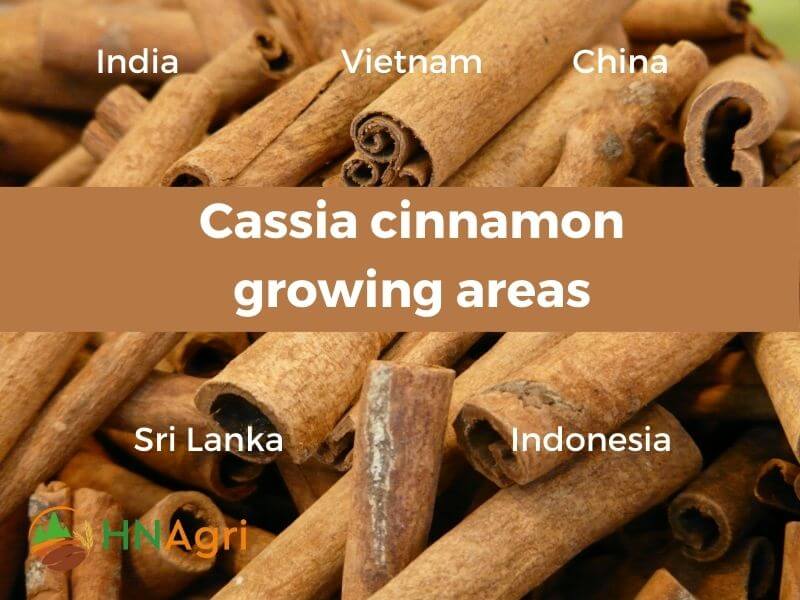
3. Prices of cassia cinnamon products today
Below is a reference price list of various types of cassia cinnamon currently available on the market. To update the detailed price list, you can directly contact the suppliers:
| Types of cassia cinnamon | Price (USD/MT) |
| Vietnamese cassia | 1.100 – 1.300 USD/MT |
| Indonesian cassia | 100 – 170 USD/MT |
| Chinese cassia | 100 – 170 USD/MT |
There are many factors that can affect the price of cassia cinnamon in different countries, including:
- Quality differences: Cassia cinnamon produced in different countries may have different qualities. The quality of Vietnamese cassia cinnamon may be considered higher than that of Indonesia and China, and therefore its wholesale price is higher.
- Production costs: Production costs in Vietnam may be higher than in other countries due to various factors such as weather, labor costs, and infrastructure. Therefore, the wholesale price of Vietnamese cinnamon may be higher.
- Supply source: Vietnam may not produce as much cassia cinnamon as Indonesia and China, so the supply of Vietnamese cassia may be rarer. This scarcity can lead to higher prices.
- Transportation costs: Transporting cassia from Vietnam to other markets may be more expensive than transporting it from Indonesia or China, so the wholesale price of cinnamon cassia from Vietnam may be higher.
Therefore, to choose the suitable cassia cinnamon product, you should consider choosing the one that fits the customer’s needs.

4. Kinds of cassia cinnamon products wholesale in the world
There are several kinds of cassia cinnamon products that are commonly sold wholesale in the world, including cigarette cinnamon, tube cinnamon, aromatic broken cinnamon, ground cinnamon, cinnamon oil, powder cinnamon, split cinnamon and cinnamon stick.
- Cigarette cassia: cigarette cassia is made from inner barks of cinnamon trees. They will then be dried, either in the sun or in a mechanical dryer, to form a cigarette-like shape, thường được sử dụng cho aromatherapy, flavouring beverages, medicinal purposes.
- Tube cassia: It is different from cinnamon quills, which most people are familiar with because it is shaped like a tube. Tube cassia is known for its high quality, unique flavour, and aroma, which is derived from its high essential oil content.
- Aromatic broken cassia: Aromatic broken cassiais a type of cassia cinnamon that has been broken or cracked into small pieces. This type of cinnamon is commonly used as a spice in cooking and baking.
- Ground cassia: Cassia powder is made by grinding cassia sticks into a fine powder. It is commonly used as a spice in cooking and baking, and can also be added to drinks like coffee and hot chocolate.
- Cinnamon cassia oil: Cinnamon cassia oil is made by steam distilling the leaves and twigs of the cinnamon tree. It is commonly used in aromatherapy and as a flavouring in food and drinks.
- Split cassia: Split cassia is a type of cassia cinnamon that has been split or cracked lengthwise into two or more pieces for decorative or visual purposes. It is commonly used as a garnish or decoration in food and beverages, and can also be used in cooking and baking to add a more pronounced cinnamon flavor.
- Cinnamon cassia stick: Cassia sticks are made by drying the bark of the cassia cinnamon tree and then rolling it into long, thin sticks. They are commonly used in cooking, baking, and making tea.
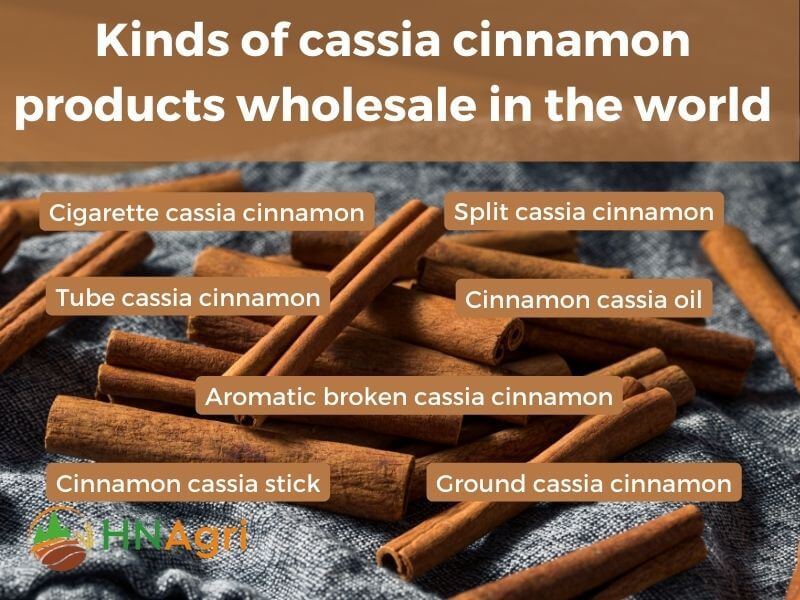
Kinds of cinnamon cassia products wholesale in the world
5. Cassia cinnamon production process and output
The production process of cassia cinnamon typically involves several steps:
- Step 1: Select cinnamon. Fresh cassia is purchased from farmers and transported to the sorting area. Choose cinnamon bucket, cinnamon crumble, broken.
- Step 2: Grate cinnamon: put the cinnamon down the tube, straighten the knife, shave the entire length of the cinnamon tube to clean the peel. Do not grate deep into the cinnamon meat inside. Make sure the edges of the cinnamon stick are clean.
- Step 3: Wash the cinnamon. Put cassia into the washing machine system to wash. Make sure to clean the top and bottom of the cinnamon stick.
- Step 4: dry cinnamon: arrange cinnamon on the drying rack, put into the drying house system. Let the drying temperature be about 48-55 degrees Celsius. After drying, the allowable humidity <= 13%.
- Step 5: Crush cassia cinnamon: Crush the large pieces to bring the size 5-10 cm.
- Step 6: Fan, pick up impurities: Clean fan, blow away dust and light impurities that can fly out. Raw materials after the fan are run through the conveyor to pick up impurities, remove dark pieces, and unsatisfactory pieces.
- Step 7: Crushing cinnamon: Cassia is put into a mill, ground into a fine powder of size 60 mesh.
- Step 8: Sieve cinnamon: Use a 60-mesh sieve to sieve, remove the parts that have not been sieved for further grinding.
- Step 9: Pasteurization: The material dries itself during the pasteurization process
- Step 10: Packing the finished product of cinnamon cassia.
The exact global production of cassia cinnamon is difficult to estimate, as data on production levels can be incomplete or outdated. However, according to recent estimates from the Food and Agriculture Organization (FAO) of the United Nations, the world production of cinnamon (which includes both cassia and Ceylon cinnamon) was around 238,000 metric tons in 2020.
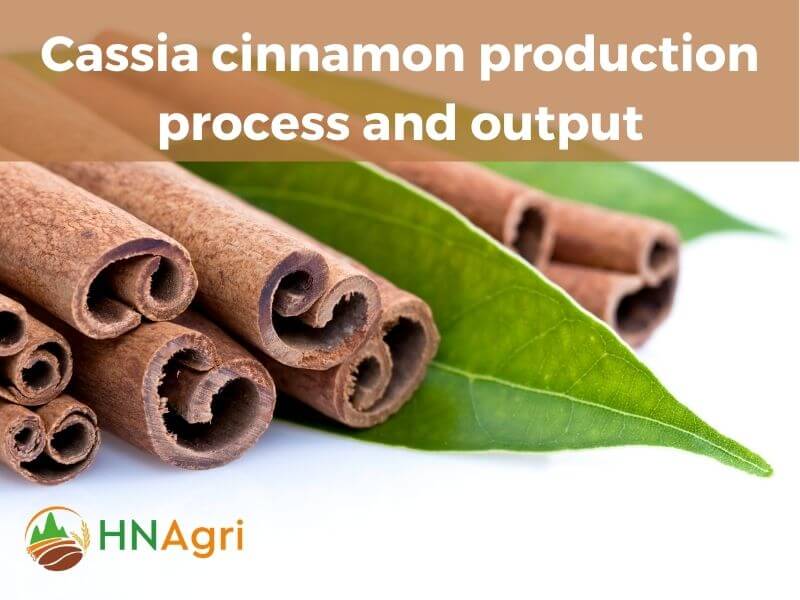
6. Top 5 suppliers of cassia cinnamon in the world
There are many cassia cinnamon suppliers in the world, here are the top 5 reputable suppliers that wholesalers can refer to.
6.1. Rempah Sari is Indonesia’s one of the largest important cassia cinnamon exporters
It began operations in 1964, dealing initially in commodities such as clove, coffee, nutmeg, essential oils, and cinnamon. They’ve been in the cassia trade for a while now, and their annual export capacity is between 2,500 and 3,500 tons, making them one of the biggest cassia exporters in Indonesia.
6.2. Hanoi Cinnamon leading supplier of cassia in Vietnam
Hanoi Cinnamon was established in 1995, is one of the leading cassia cinnamon suppliers in Vietnam. Cassia cinnamon at Hanoi Cinnamon Company is selected from Yen Bai region, meeting European standards such as VN-STAMEQ, IFS, PCA, UEBT. Hanoi Cinnamon always attaches importance to customers and product quality first to maintain its belief and is proud to be the top expert in agriculture sector. If you want to purchase high-quality cassia cinnamon in bulk from Vietnam, Hanoi Cinnamon Company is the top choice for you.
Contact information:
Whatsapp: (+84)961504190
Website: www.hncinnamon.com
Email: hanoicinnamon1@gmail.com
6.3. Jining Sunagro Trade Co., Ltd. a top provider cinnamon cassia come from China
Jining Sunagro Trade Co., Ltd. exports cinnamon from various Chinese regions in addition to fruits and vegetables. Cassia cinnamon, used in cooking and baking, is one of their cinnamon grades.
Jining Sunagro Trade Co., Ltd., a Chinese agricultural company, is trusted by many global businesses due to their commitment to quality, safety, and customer satisfaction.
6.4. Rathna Producers Cinnamon Exports (Pvt) Ltd the largest cassia cinnamon in Sri Lanka
Rathna Producers Cinnamon Exports (Pvt) Ltd. exports the most cassia cinnamon in Sri Lanka and earns a lot of foreign exchange. The Sri Lankan Board of Investments has certified the company as an exporter. This is also a reliable cinnamon supplier from Sri Lanka that you can refer to.
6.5. Hanfimex (or Hay Hanfimex Group) is one of the leading cassia export corporations in Vietnam
Hanfimex (or Hay Hanfimex Group) is one of the leading export corporations in Vietnam. The company was established in 1996 and mainly operates in the field of exporting agricultural products, food, and raw materials to international markets.
Hanfimex brand provides agricultural products, including cassia cinnamon, from regions growing crops in Vietnam. The company owns several modern manufacturing plants to process agricultural products before exporting them.
